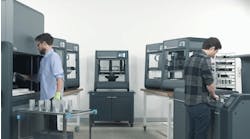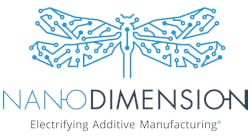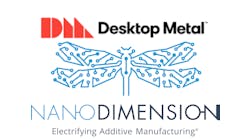By Chris McNamara, Smart Industry editor in chief
Like many of our cutting-edge technologies, additive manufacturing was predicted decades ago by forward-thinking science-fiction writers. The replicator that Spock and Captain Kirk used on Star Trek was a pretty-darn-accurate predecessor to the modern 3D printer. Kudos Gene Roddenberry & company, who also foresaw tablet computers, voice-activation, synthetic meat and tribbles. (They weren’t always correct.)
The opportunities created by the seemingly limitless capabilities of 3D printing—or additive manufacturing if you like it when people ask “What does that mean?”—are enough to get you dreaming. The industrial applications are great, of course. Print a hard-to-source part right there in some remote auto shop. Or fabricate replacement components in the factory, rather than enduring the order/wait/delivery process. Or build entirely new designs that are stronger, lighter and cheaper than their conventionally machined predecessors. Win win win.
But let’s step outside of the plant. As additive manufacturing becomes commonplace—and cheap—people are running with this technology.
We’re printing food and clothes and dinosaur bones. Americans, of course, are 3D printing firearms and arguing about the legality of doing so.
There’s a sundial out there, courtesy of additive manufacturing, that projects a “digital” looking readout of the time in its shadow, caused by precise carvings within the plastic rod. In a way, it feels like the future is going back to the past.
Creepiest is California-based UPD Urns, which produced custom ash-holders via 3D printing. Lifelike—if miniature—busts of the deceased decorate the urns, which is either a touching tribute to a lost relative or a handy way to organize a whole bunch of ashes, akin to writing your name on your lunch bag in the office fridge.
My favorite facet of UPD Urns is the fact that you must sit for a ten-minute scanning procedure—while still alive!—in order for them to fabricate your likeness for the printed bust.
“Why is this man scanning my face?”
“Sit still, grandma, or you’ll ruin your urn.”
In a nutshell, if it can be manufactured, it can be manufactured additively. It probably already is.
In China they are performing port-mortem face restoration using 3D printers to replicate the appearance of the deceased’s mug before the accident that put them in the coffin. The procedure costs less than a thousand bucks, which is a bargain compared to pre-death face restorations. If you’re thrifty and patient, this is the best option for that facelift you’ve always wanted.
There are multiple projects dedicated to developing 3D printers that can use Martian soil to produce the tools that intergalactic colonists would need to, say, clean Martian soil from their 3D printers.
And there are additive-manufacturing case studies at the crossroads of human ingenuity and empathy. At the University of Louisville’s Rapid Prototyping Center (Go Cardinals!!!), Manager of Operations Tim Gornet helped 3D print an accurate model of an infant’s tiny heart, enabling surgeons to practice on a replica before performing the real procedure. Both the project and the surgery were a success—a kid out there can credit this technology for saving his life.
And those creeps at UPD Urns will have to wait a few decades.


